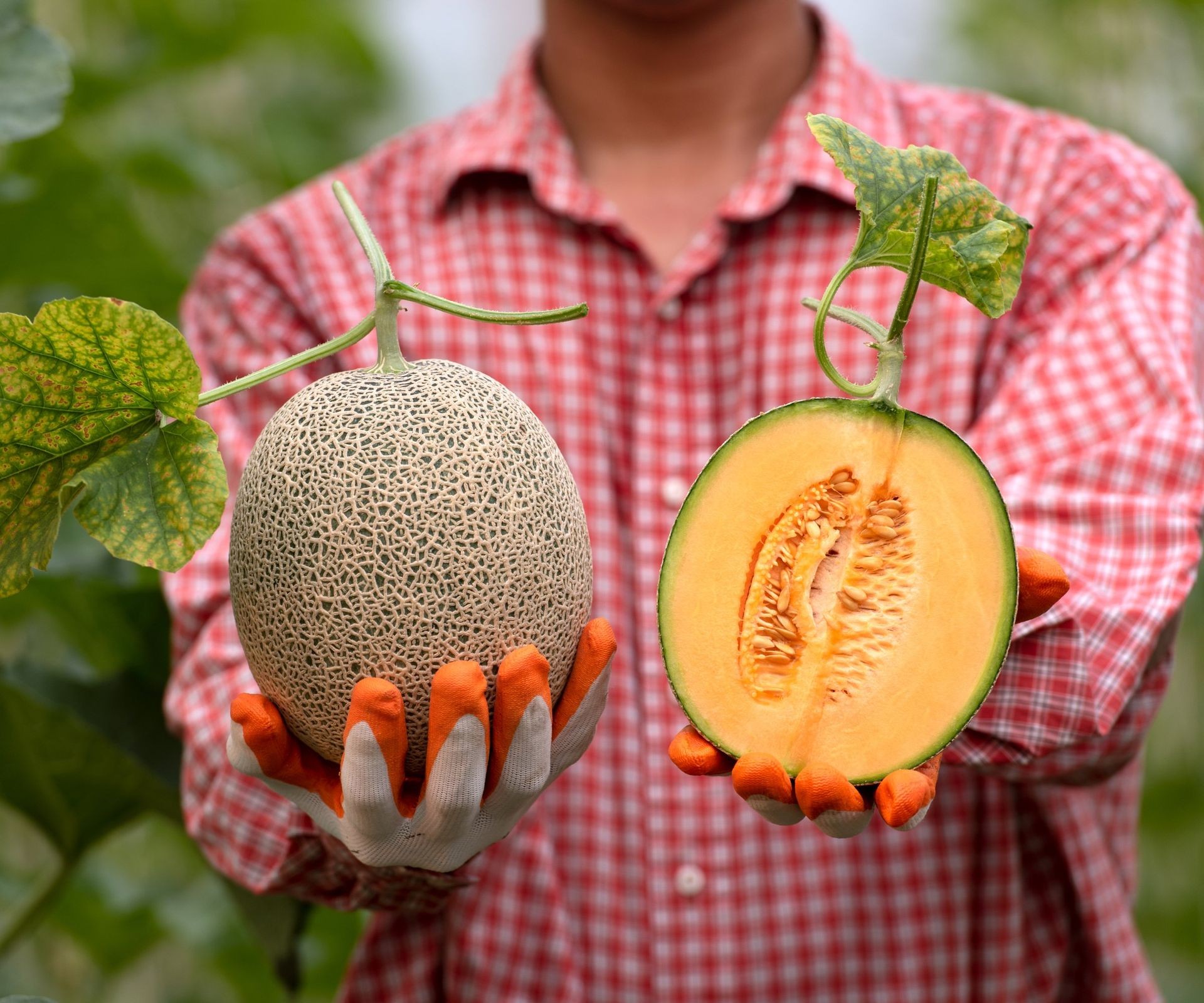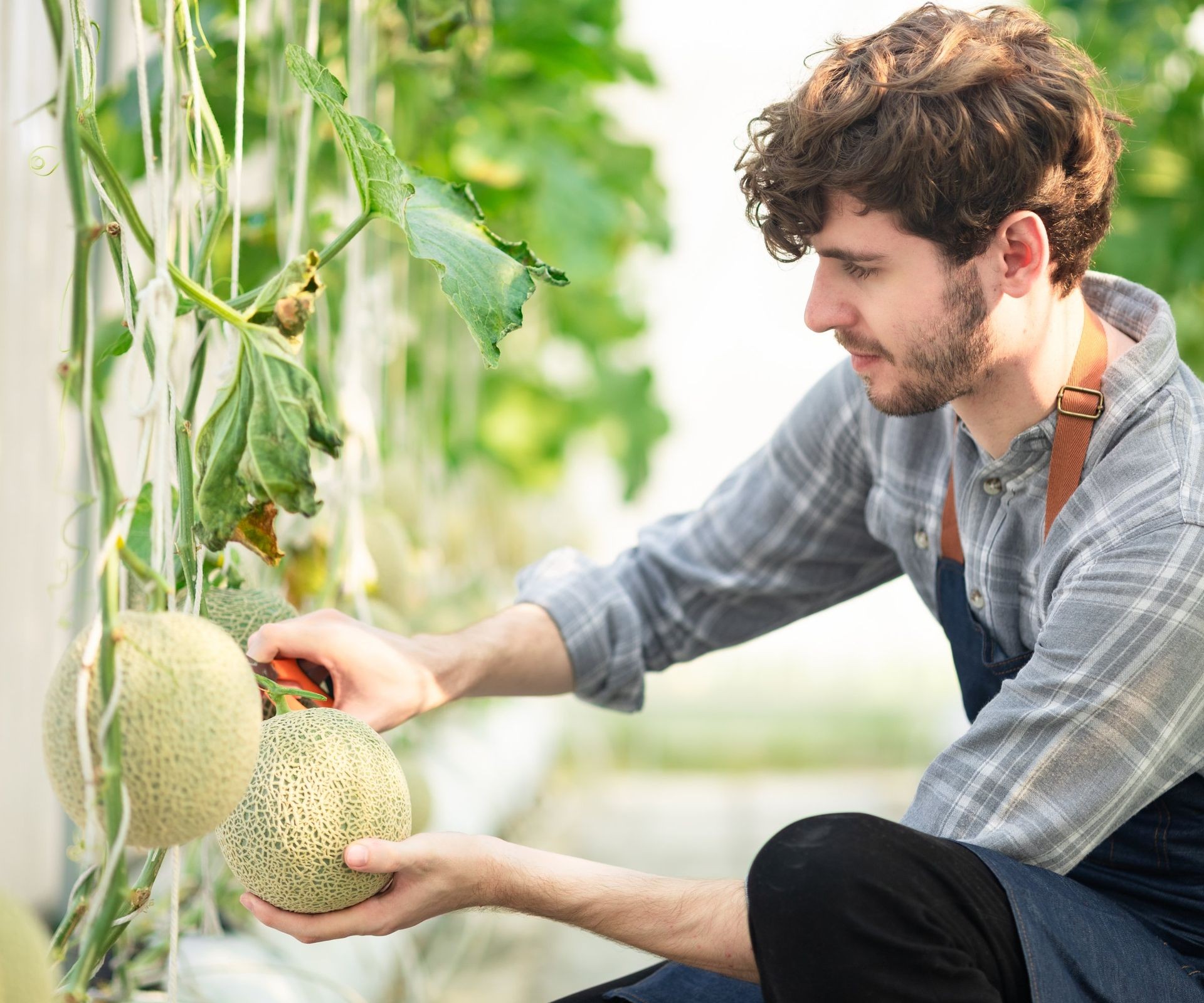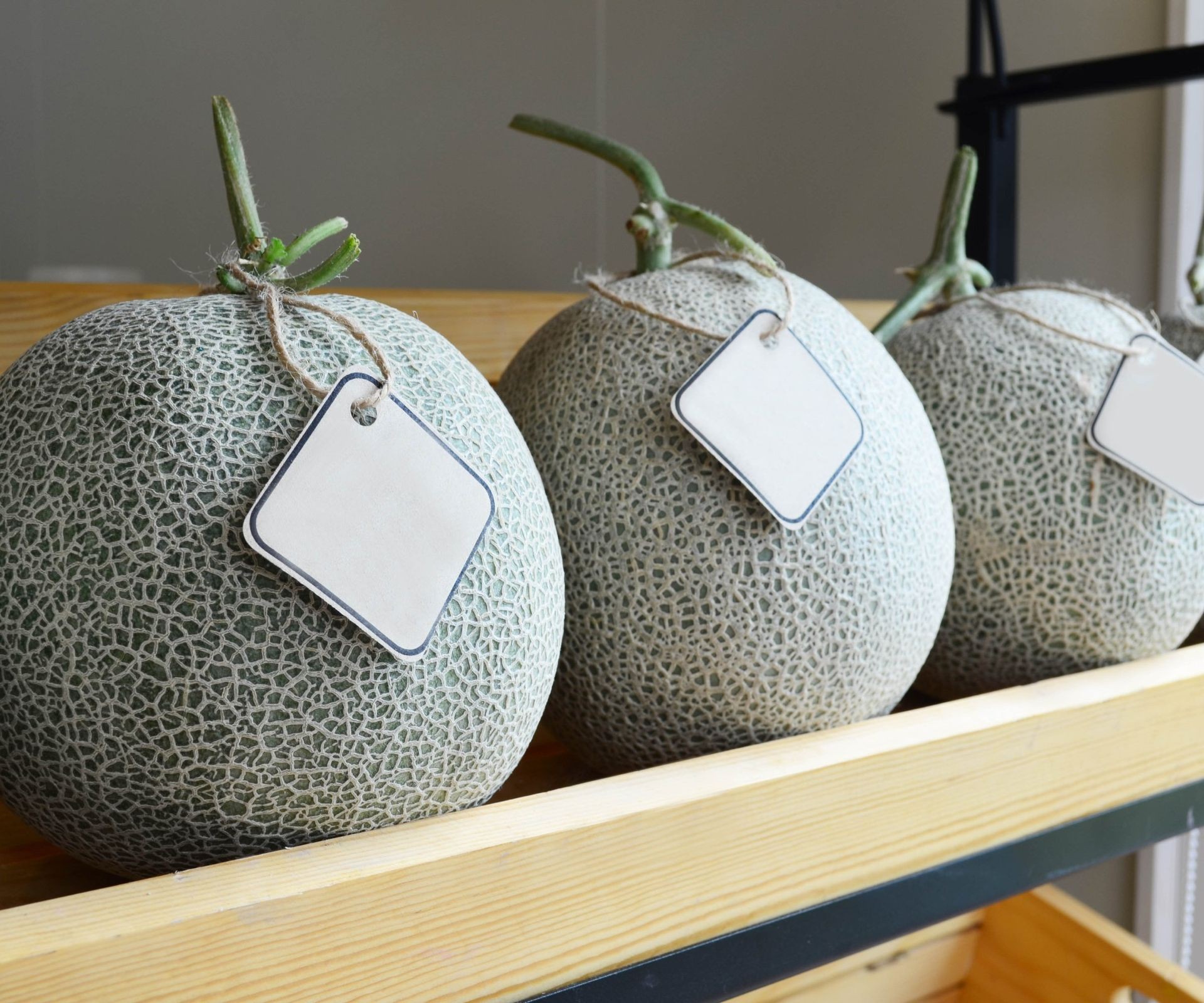No products in the cart.
NEWS
When to Pick Cantaloupe: An Expert Guide to Harvesting Ripe, Sweet Melons
Knowing the perfect moment to harvest a cantaloupe transforms a simple fruit into a summer delicacy. The musky sweetness and juicy texture of a perfectly ripe cantaloupe are unparalleled, whether enjoyed on its own or as part of a fresh fruit salad. As a seasoned expert in agriculture and a content creator for Biogarden.asia, I understand the nuances of cultivation and harvest that lead to the most flavorful results. Forget old myths; let’s delve into the proven signs that tell you your cantaloupe is ready for picking. Mastering these techniques is your key to experiencing the true promise of the season’s bounty right from your garden or identifying the best melon at the market.
The timing of your cantaloupe harvest is crucial for achieving that deep orange interior and rich flavor profile. So, exactly when is a cantaloupe ready to be picked? Generally, most cantaloupe varieties reach maturity between 80 and 90 days after the seeds were planted. However, this timeframe can fluctuate based on numerous factors, including your specific climate zone, the intensity of regional warmth, whether the plants receive adequate sunlight, and overall growing conditions. Another reliable time marker often cited is approximately 35 days after the flowers have been successfully pollinated and fruit formation begins.
Commercial growers often harvest melons before they reach peak ripeness to ensure they survive the journey to market. These melons are typically picked at what’s called “half slip.” This stage is identified when the stem still requires a firm pull to separate from the fruit. While not fully ripe, a half-slip melon is mature enough for harvest and will usually finish ripening over the next three days at room temperature.
How to Tell If Your Cantaloupe is Perfectly Ripe
 Examining a whole and a cut cantaloupe to check for ripeness signs like netting and color
Examining a whole and a cut cantaloupe to check for ripeness signs like netting and color
Determining the optimal time to harvest cantaloupe from your vine relies on observing specific physical cues. The most definitive sign of readiness for immediate consumption is reaching the “full slip” stage. This is when the melon can be easily detached from the stem with minimal effort, often practically falling off the vine when gently lifted or twisted.
In addition to the ease of separation, several other indicators point to peak ripeness:
- Blossom End Softness: Gently press the end of the melon opposite where it attaches to the vine (the blossom end). A ripe cantaloupe will yield slightly to gentle pressure, indicating the flesh inside is softening.
- Skin Appearance: The rind should display a fully developed, prominent netting pattern across its surface. The base color underneath the netting should have transformed from green to a consistent creamy yellow or golden-brown hue. Any significant patches of green suggest the melon is not yet ready.
- Aroma: This is often the most delightful sign. Lean down and inhale near the blossom end of the fruit. A ripe cantaloupe emits a strong, sweet, and distinctly musky fragrance. The more pronounced the musky smell, the sweeter and more delicious the melon is likely to be.
Picking Cantaloupe Based on Your Needs
 A gardener harvesting a ripe cantaloupe melon from the vine
A gardener harvesting a ripe cantaloupe melon from the vine
Your intended use for the cantaloupe should influence exactly when you decide to pick it.
If you don’t plan to eat the melon immediately, but rather within a few days, harvesting at the “half slip” stage is appropriate. At this point, the blossom end will show some slight give when pressed, but the stem will still require firm, deliberate pressure with your thumb to break cleanly from the fruit. The netting should be well-formed, but you might still notice hints of green peeking through the yellowing skin. This allows the melon to finish its ripening process off the vine over the next couple of days.
For immediate enjoyment, wait until the melon reaches “full slip.” The blossom end should feel noticeably soft, and the fruit should detach from the vine with little to no resistance when you lift or gently twist it. The rind will exhibit deep, complete netting, and the skin color will be fully golden. Most importantly, the rich, sweet aroma characteristic of ripe cantaloupe will be unmistakable. This is when the melon is at its peak flavor and sweetness.
Storing Your Harvested Cantaloupe
 Storing harvested cantaloupe melons on a shelf at cool temperature
Storing harvested cantaloupe melons on a shelf at cool temperature
Once harvested, cantaloupes and most other melon types store best in cool conditions. The ideal temperature range for storing whole cantaloupes is between 36 and 45 degrees Fahrenheit (2-7°C). A refrigerator is typically the most convenient place for home storage, though a cool root cellar would also work. A whole, ripe cantaloupe can usually be kept in the refrigerator for up to two weeks. To prevent the melon’s distinctive musky aroma from transferring to other foods in the fridge, it’s a good practice to place it in a loosely tied plastic bag or a produce drawer.
If you’ve picked a melon that is slightly underripe (at half slip), it will need to sit on the counter at room temperature (preferably around 70°F or 21°C or warmer) for a day or two to complete the ripening process. Once the cantaloupe is fully ripe, you can transfer it back to the refrigerator to chill before serving, or enjoy it at room temperature, which some find helps to intensify the fruit’s natural sweetness and flavor.
Frequently Asked Questions
Does cantaloupe ripen off the vine?
Unlike some fruits, cantaloupe can continue to ripen somewhat after being picked, provided they were harvested at the correct stage – specifically, at least at the “half slip” point when the underlying color is beginning to change from green to yellow. Fruit picked when still completely green will soften but will not develop the sugars and characteristic flavor of a ripe melon. Commercial breeding has focused on varieties with this ability to facilitate shipping.
How long does it typically take for cantaloupe to grow?
The time from planting seeds to harvesting ripe fruit varies by variety and growing conditions, but most common cantaloupe types mature and are ready for harvest approximately 80 to 90 days after sowing. Some faster-maturing varieties might be ready in as little as 70 days under optimal conditions.
What happens if I pick my cantaloupe too early?
Picking a cantaloupe too early, especially when it is still entirely green and shows no signs of slip, is generally not recommended. While the flesh may soften slightly after picking, the critical development of sugars and flavor compounds primarily occurs on the vine. An early-picked green melon will lack the sweetness, aroma, and rich taste of a properly ripened one. Melons picked just before peak ripeness (at half slip) can be left in a warm spot (above 70°F or 21°C) to finish developing over a few days.
Achieving a perfect cantaloupe harvest from your garden is incredibly rewarding. Knowing these signs and techniques ensures you capture the fruit at its peak of flavor and sweetness. Explore the range of quality gardening supplies and resources available at Biogarden.asia to support your journey in growing the most delicious melons and other produce right at home.
Source: Original Article Content



